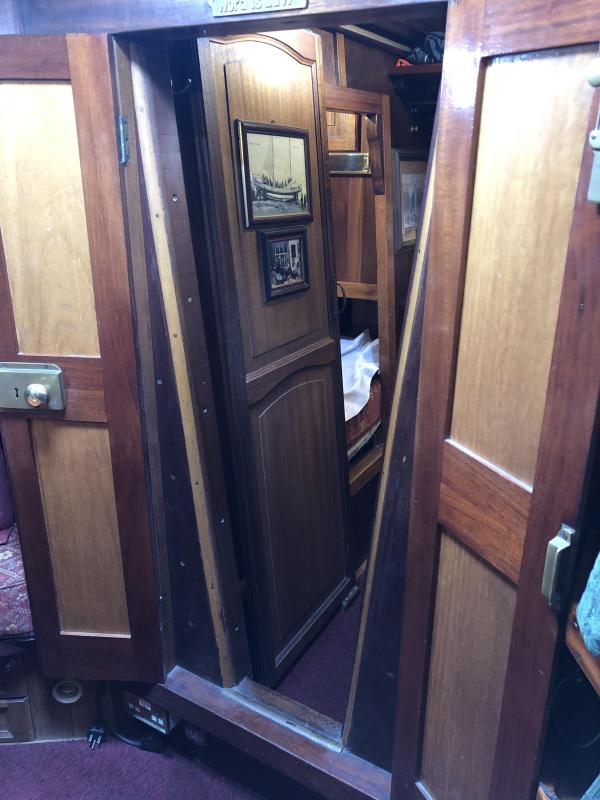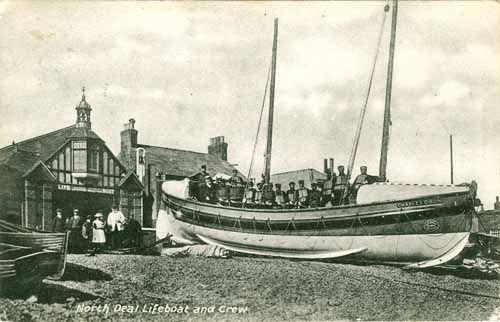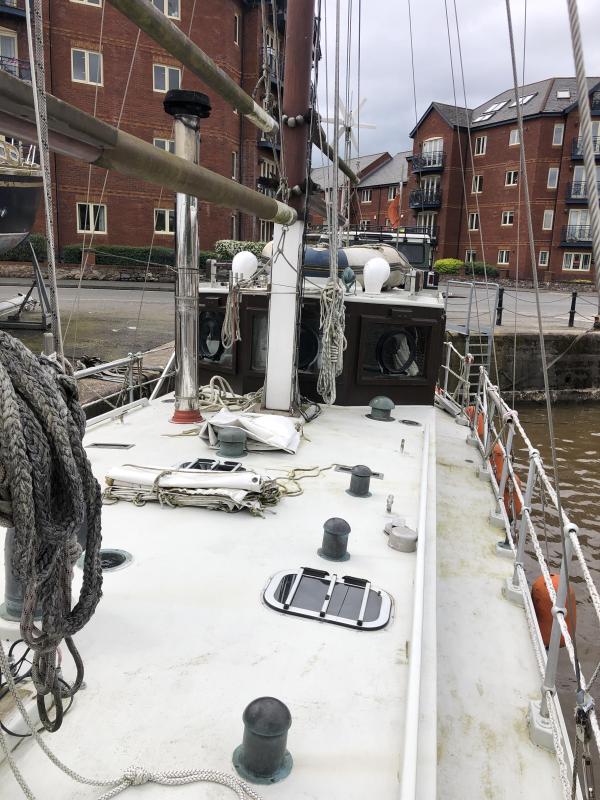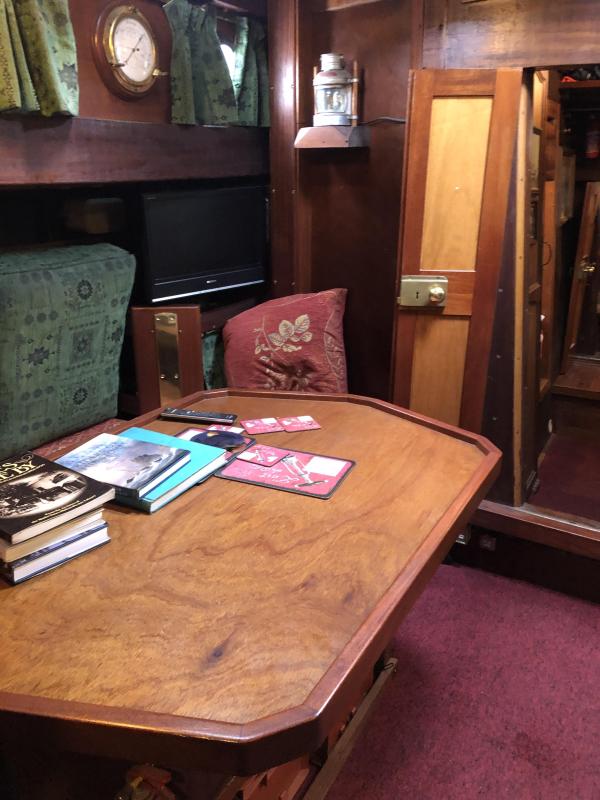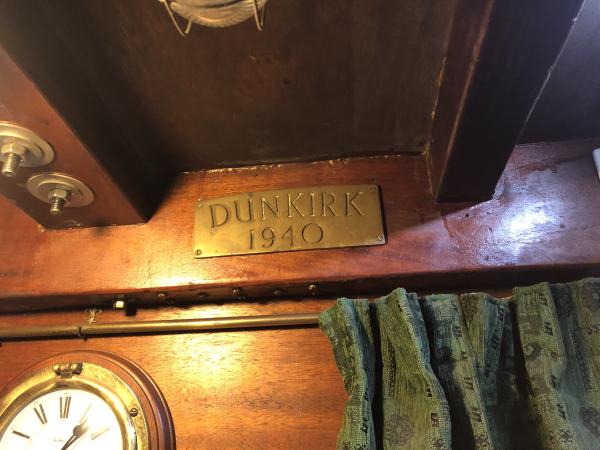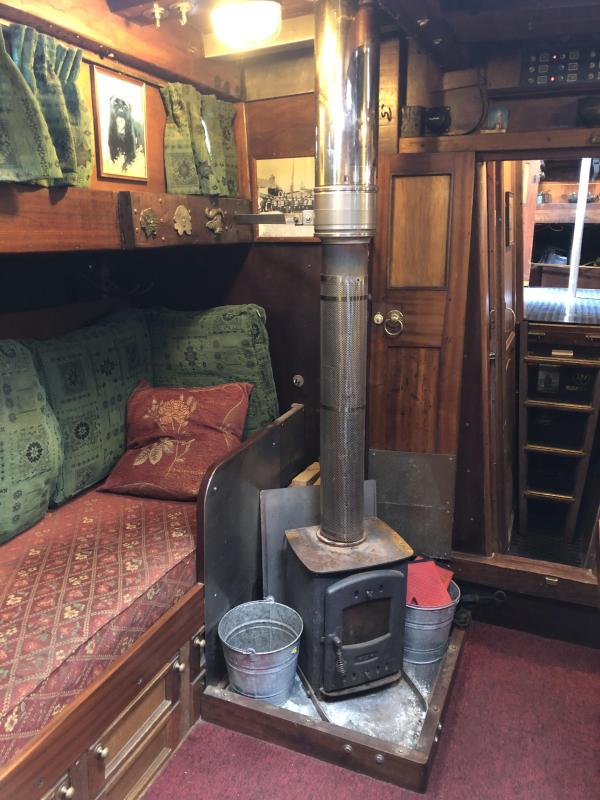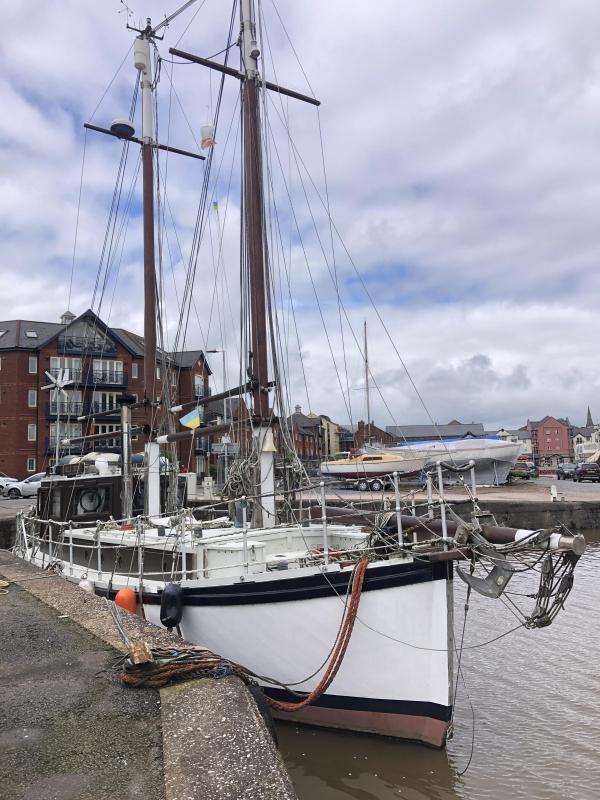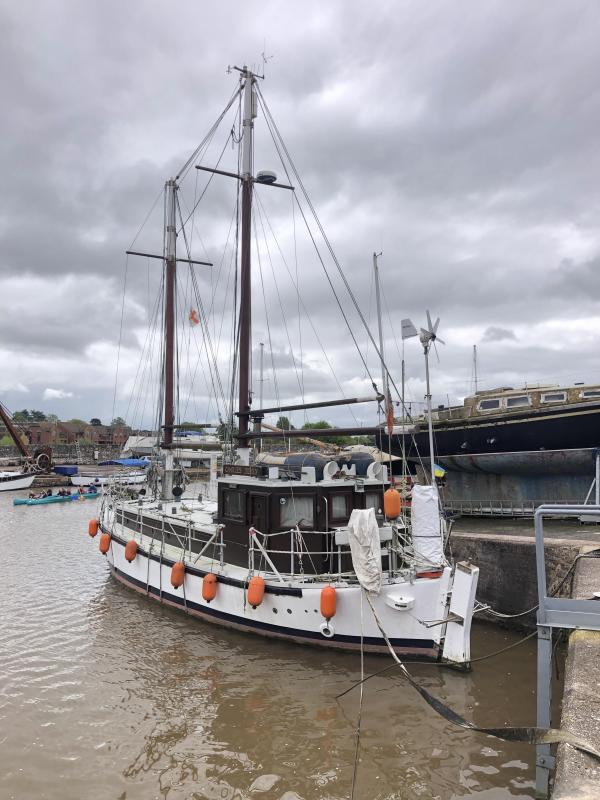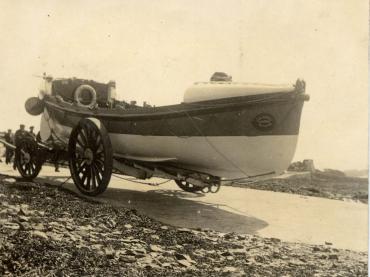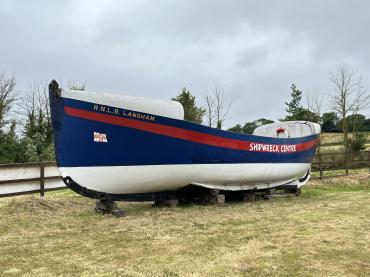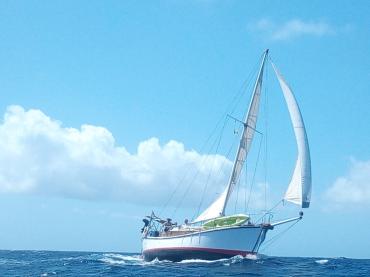

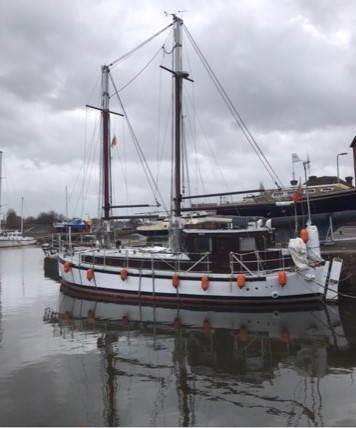
Previous names
- Waratah
- Barbara Pelly
- 1905 - 2023 Charles Dibdin
Details
Construction
Dimensions
History
CHARLES DIBDIN (ON552) was built as a self-righting pulling and sailing lifeboat with twin drop keels. She was based at Deal and then at Walmer lifeboat stations whilst working on the Goodwin Sands, Kent, between 1905 & 1932.
CHARLES DIBDIN is documented as saving over 395 lives in 186 service launches. She gave assistance many times including help with World War Two rescues for the Admiralty. During her service life, her Coxswain William Adams was awarded three silver medals by the Royal National Lifeboat Institution, as well as a gold watch and chain by the US Government, with Acting Coxswain William Staton also being awarded a bronze medal.
Her rescues included going to the aid of the trawler DE LA POLE which had run aground on the Goodwins on 4th February 1916. When the lifeboat reached her. heavy seas were crashing over the trawler and her crew of 11 were in the rigging, holding on desperately. Eventually, Coxswain Adams manoeuvred the lifeboat close enough for a grapnel to be thrown up to the men and this was made fast. The 11 men were rescued and landed at Broadstairs.
Later that year, on Sunday 19th November, at the height of a violent storm, distress signals were seen coming from a ship aground on the Goodwin Sands. CHARLES DIBDIN was launched at 10.00 p.m. and Coxswain Adams and his crew battled their way out through mountainous seas, churned up by near hurricane force ENE winds. The casualty was the Italian steamer VAL SALICE and the lifeboat reached her at about midnight. The lifeboatmen dropped anchor and in torrential rain, with the steamer being illuminated by a searchlight from one of the guard-ships, the lifeboat was slowly veered down towards the casualty, huge waves repeatedly sweeping over her. With very great difficulty, all 30 members of the steamer's crew were rescued and landed at 3.00 a.m.
On 29th January 1919, CHARLES DIBDIN was used to rescue 29 members of the crew of the S.S. PIAVE of New Jersey, which was wrecked in violent seas on the Goodwins. The same year, CHARLES DIBDIN also attended the schooner TOOGA on 1st November and the ketch CORINITHIAN.
After CHARLES DIBDIN was withdrawn from service, she was converted to a 'cabin cruiser' and, in the 1980s, was stripped back to her original hull and rebuilt as a conversion. Two new Ford New Holland 85hp engines and two new masts were installed. Since then, she has sailed, with crew, to France, the Bay of Biscay & along the Southwest coast of the United Kingdom, often attending maritime festivals. CHARLES DIBDIN was sold into new ownership in January 2024.
Significance
1. What is the vessel’s ability to demonstrate history in her physical fabric?
Evidence for designs, functions, techniques, processes, styles, customs and habits or uses and associations in relation to events and people. How early, intact or rare these features are may impact on significance.
CHARLES DIBDIN is a 43 foot self-righting pulling and sailing wooden lifeboat built by Thames Ironworks in 1903 and fitted with twin drop keels. After leaving service, she was converted to a motor cruiser for private use and a cabin was added. Only the hull and centreline structure now remain as original. The hull has been sheaved in fibreglass on the outside, whilst inside the original double diagonal Honduras mahogany planking and copper fastenings remain visible behind the ceiling boards. The rest of the superstructure, deck and accommodation was replaced in the 1980s, modelled on the original conversion when released from service. The hull has been raised amidships by 8-10” and the overall sheer reduced. The accommodation and wheelhouse have been reconstructed to the same design as her original conversion. The two centre keels have been removed with additional ballast being added along with extended bilge keels to help her take the ground. Two Ford New Holland 85 horsepower engines have been installed and two new masts fitted with a gaff schooner rig. Accommodation has been fitted internally, using iroko hardwood.
- What are the vessel’s associational links for which there is no physical evidence?
Associations with people or places. Off-ship research.
CHARLES DIBDIN was built at Thames Ironworks, London and stationed at Deal, then Walmer, lifeboat stations whilst working on the Goodwin Sands, Kent, between 1905 & 1932 which gives her strong local significance to that area. She is documented as saving over 395 lives in 186 service launches. She gave assistance many times including help with Admiralty rescues during the First World War. In 1916, she went to the aid of Italian steamer VAL SALICE, evacuating 30 crew and a certificate of gratitude with accompanying medal was later sent by the King of Italy. During her time in service, her main Coxswain William Adams was awarded three silver medals by the RNLI, as well as a gold watch and chain by the US Government, with Acting Coxswain William Staton also being awarded a bronze medal. She was recorded on the National Register of Historic Vessels in 2023.
- How does the vessel’s shape or form combine and contribute to her function?
Overall aesthetic impact of the vessel, her lines, material she was built from and her setting. Does she remain in her working environment?
Originally designed for lifesaving purposes, CHARLES DIBDIN has now been adapted to facilitate her present use as a private cruiser, with her accommodation comprising a comfortable cabin layout which makes the most of her internal hull volume. During the conversion, she has lost much of her original external appearance and sheer, including the classic end boxes which gave her the self-righting properties, although she still retains something of her distinctive RNLI shape. CHARLES DIBDIN remains operational as a private pleasure craft maintained to a high standard.
Source: NHS-UK team, January 2024
Key dates
-
November 1905
CHARLES DIBDIN enters service as a lifboat for the Royal National Lifeboat Institution, based in Deal, Kent
-
February 1916
First RNLI Silver Medal awarded to Coxswain William Adams for the rescue of 11 crewmembers from the trawler DE LA POLE
-
November 1916
Second RNLI Silver Medal awarded to Coxswain Adams for the rescue of 30 crewmembers from the Italian steamer VAL SALICE
-
November 1919
Third RNLI Silver Medal awarded to Coxswain Adams for the rescue of 2 crewmembers from the schooner TOOGO. Later that same month, Acting Coxswain William Stanton awarded the Bronze Medal for the rescue of 2 crewmembers from the ketch CORINTHIAN
-
1920
Coxswain Adams awarded a gold watch and chain by the US Government for the rescue of 29 crewmembers from the American steamer PIAVE in January 2019, with all other CHARLES DIBDIN crewmembers being awarded a gold medal
-
July 1932
CHARLES DIBDIN retired from service with 395 lives saved in 186 service launches, sold to H. Lindridge of Maidstone
-
2023
New owner
Sources
Fawkes, Leslie G.; Barker, Tony; Morris, Jeff, 125 Years of CISPOTEL Support for the Royal National Lifeboat Institution. A History of the Fund and its Lifeboats (London, CISPOTEL Lifeboat Fund, 1991), pp.19-20
Own this vessel?
If you are the owner of this vessel and would like to provide more details or updated information, please contact info@nationalhistoricships.org.uk

